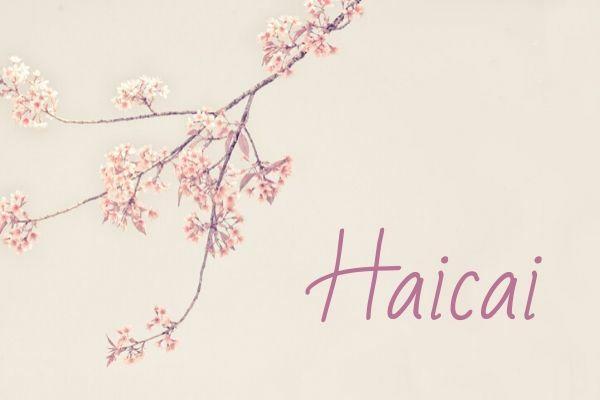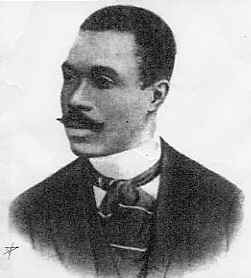O haiku is a brief poetic composition of Japanese origin. On the thematic level, it seeks to express the relationshipto the in between the human being and The nature. Its philosophical foundation is the Buddhist principle according to which everything in the world is fleeting, and it is up to human beings to recognize themselves as passive to continuous changes, such as nature and the four seasons.
In the 17th century, the Japanese poet Matsuo Basho (1644-1694) distinguished himself as a great master of haiku, his poetry remaining a source of inspiration to this day. In Brazil, this style of poem continues to be produced with great consistency.
Read too: Cordel Literature – popular poetry widespread in the North and Northeast of Brazil
Characteristics of the haiku
the haiku is composed of three verses, the first having five poetic syllables, the second having seven and the third having five. Note the following example:
Winter
The winter sun:
on horseback freezes
my shadow.
This haiku, by the Japanese poet Matsuo Bashô (1644-1694), written between 1687 and 1688, has:
In the first verse, five poetic syllables: O/sol/de in/ver/no;
In the second, seven poetic syllables: a/ca/va/lo/con/ge/la;
In the third, five syllables: a/ mi/nha /som/bra.
Regarding the thematic aspect, Bashô's haiku remains faithful to the genre, characterized by present reflections on nature, the passage of time, and reflect on a marked season of the year by the cold.

Haiku in Brazil
In Brazil, the following stand out as great poets in the composition of haiku: Paulo Leminski, Millôr Fernandes, Guilherme de Almeida and Paulo Franchetti.
Paulo Leminski
Born on August 24, 1944, in Curitiba, and died on June 7, 1989, the poet from Curitiba was also a translator, literary critic, composer and teacher. Very influenced by Japanese culture, he became an admirer of the work of the Japanese Matsuo Bashô, which inspired him to produce this style of poetry. See some haiku from Paulo Leminski:
blowing this bamboo
just shoot
what gave you the wind
check out
all that breathes
conspire
the palm tree trembles
clap for her
that she deserves
In these three haikus, all untitled, there are striking features of this style of poem. In the first, the elements of nature, combined and manipulated by human beings, result in sounds. In the second haiku, the lyrical self alerts the reader to the conspiracy, seen as something inherent in any being that breathes, human or not. In the third poem, the magnificence and beauty of palm trees is exalted, which have their leaves tossed by the wind.
Do not stop now... There's more after the advertising ;)
Millôr Fernandes
Born on August 16, 1923, in the city of Rio de Janeiro, and died on March 27, 2012, in that same city, Millôr Fernandes was a comedian, playwright, designer, writer and journalist. He wrote, among other books, the compilationHai-Kais, work that brings together the haiku written by him between 1959 and 1986. See some of them:
Exotic,
the old woman's shawl
In the youth it is apotheotic.
Look,
Between one drop and another
rain does not wet.
Promise
And not comply:
Here live.
in there
of the newborn
Father's grave.
In the first haiku, one reflects on the generation gap personified by an old woman and a young woman. This difference is delineated by a shawl, which, when worn by the oldest, gives it an exotic air, while if worn by the younger, it would be something extraordinary, rather than exotic.
In the second haiku, there is the expression of themes very dear to the authors of this style: the mention of elements of nature. In the haiku in question, the rain, when seen in the form of its spaced drops, would not be able to wet as when faced in its entirety.
In the third haiku, the lyrical self presents a maxim according to which there is no one promise what you can deliver. In the last haiku of the selection, it is observed that the newborn child's cry of pain it represents death for the father, such is the desire for the baby not to experience any suffering.
See too: 31 of OOctober – National Day of Poetry
Guilherme de Almeida
Born on July 24, 1890, in the city of Campinas, and died in 1969, in São Paulo, capital, the poet Guilherme de Almeida, one of the immortals of the Academia Brasileira de Letras, in addition to being a writer, was a lawyer, translator, literary critic and journalist. He wrote a vast poetic work, having distinguished himself as a great haiku author. See some of them:
spring rain
see how they attract
on the wires the cold drops!
And come together. And fall.
Childhood
a taste of blackberry
food with sun. Life
it was called "Now".
At night
a bare tree
points to the sky. at one end
a fruit sprouts. The moon?
In the first haiku, already from the title, a very recurrent feature in this type of poem is evident: the thematic exploration of seasons. In the poem under analysis, spring is highlighted when the lyrical self calls the reader to see how the rain is constituted by the joining of several cold drops, which, together, form its version of spring.
In "Childhood", the passage of life, a common reflection in many haikus, appears metaphorized in the image of a blackberry eaten by the sun, without this act be considered to be done later by a child, who tends to eat the picked fruit as soon as he finds it on the foot.
In the haiku “At night”, the nature, in its simplicity, is the protagonist of magical spectacles, such as making the Moon, at night, appear, depending on the point of view and perspective of the person looking at it, like a fruit from a tree.
Paulo Franchetti
Born in São Paulo, in 1954, the author, who is also a literary critic and university professor, currently stands out as one of the most expressive haiku producers in Brazil. Among other works, he published, in 1990, the anthology Haiku.
Spring (Haru)
In the sultry afternoon,
just a chicken's voice
Who laid an egg.
Summer (Natsu)
for sure
All fly west,
Herons this morning.
Autumn (Aki)
Autumn has arrived —
more distant and bluish
The same mountains.
winter (fuyu)
Cold morning.
If it was a boy I would write
My name on the glass.
In these four haikus by Paulo Franchetti, the seasons are highlighted. In the first poem, the normality of a silent spring day, a season characterized by the flowering of vegetation, is interrupted by the cackling of a chicken that has just laid. In the second haiku, the highlight is for the herons, birds that, after the sun's awakening, migrate from the place where they spent the night to the west.
In the third haiku, the mountains are impacted by the climatic characteristics of autumn, which gives the impression that these geographic formations are becoming more distant and bluish. In the fourth haiku, the characteristic cold of winter is highlighted by the fog impregnated in the glass, which would allow the lyrical self, if he wanted, to write his name on it.
Also access: Mário Quintana – poet who wrote poems marked by simplicity
solved exercises
question 1 - Haiku is a poetic form that is characterized by conciseness and objectivity. Through just 17 poetic syllables, the enunciator (in this case, the poet) captures a snapshot of nature, and thus materializes it according to certain parameters. Guilherme de Almeida, Paulo Leminski, Millôr Fernandes and Paulo Franchetti are some of the Brazilian poets who made this style their main artistic expression. About haiku, it is correct to say that it is original
a) from Brazil.
b) from Europe.
c) from China.
d) from Japan.
Resolution
Alternative D. The haiku poetic form originated in Japan.
Question 2 - (ITA) The poem below, without title, is a haiku by Paulo Leminski:
moon in sight
you glowed like that
about auschwitz?
(Distracted we will win. São Paulo: Brasiliense, 1987.)
In this text,
I. there is a contrast between the natural image and the historical fact.
II. the contrast between “moon” and “auschwitz” provokes an emotional reaction in the lyrical subject.
III. the interrogative character reveals the perplexity of the lyrical subject.
Is(are) correct(s):
The)only I and II
B) only I and III
ç) only II and III
d) only III
and) all
Resolution
Alternative E. Items I, II and III are correct, based on a perspective of contradictions presented through the words “moon” and “auschwitz”, the former as beauty and the latter as sadness/dismay.
By Leandro Guimarães
Literature teacher


